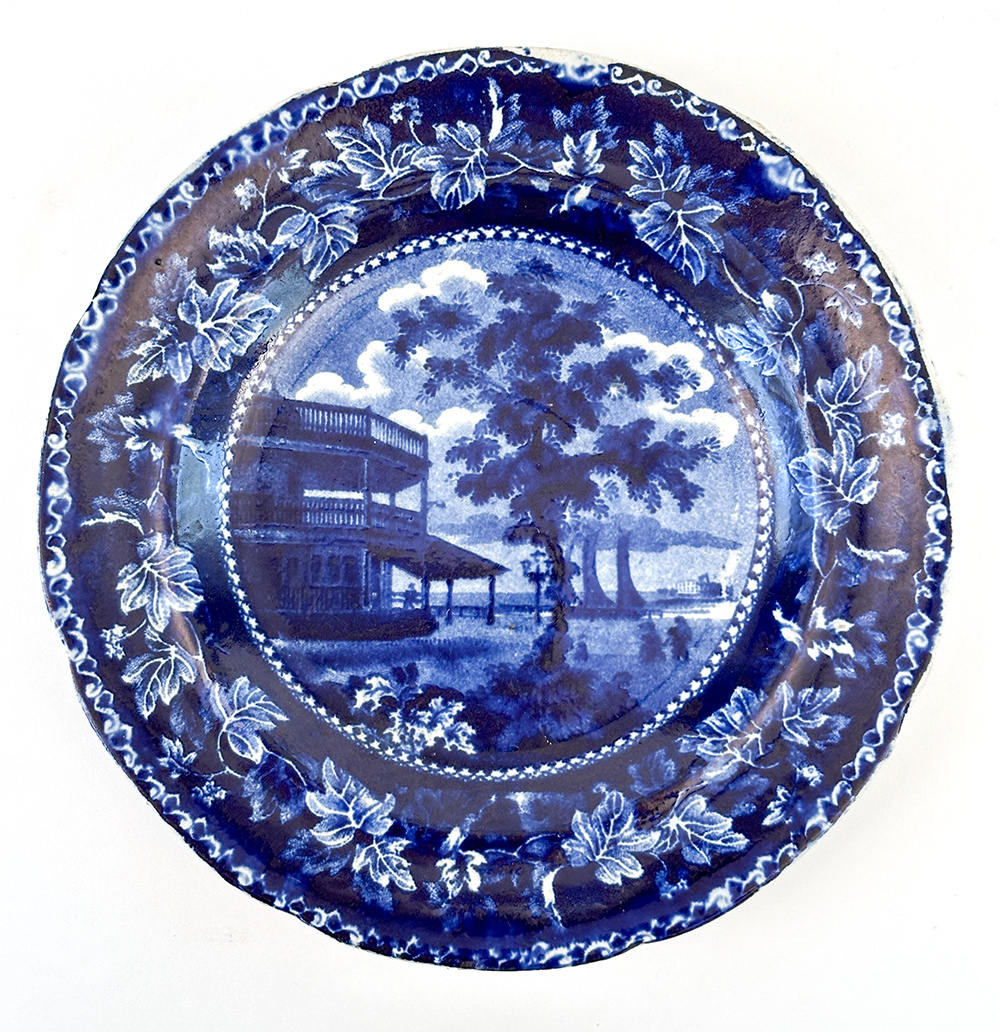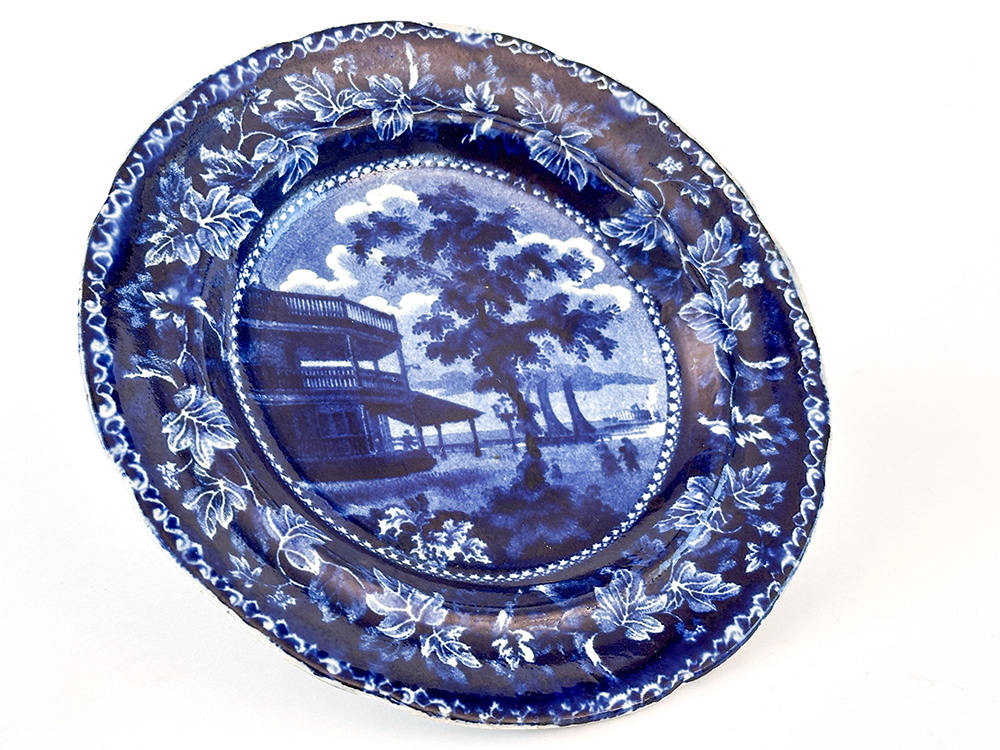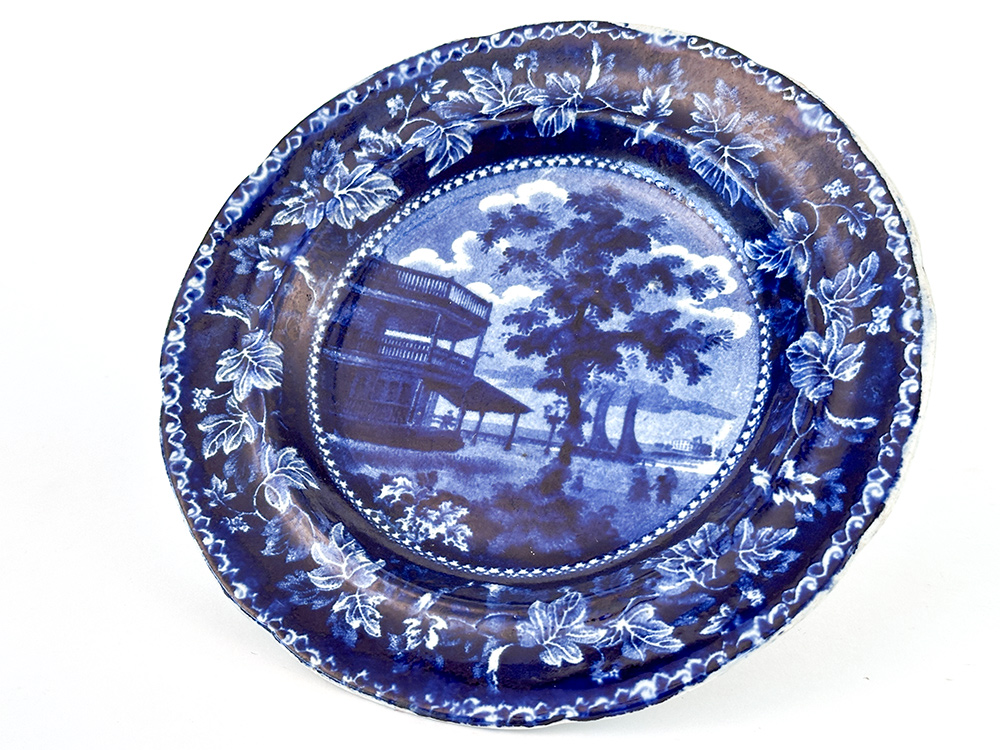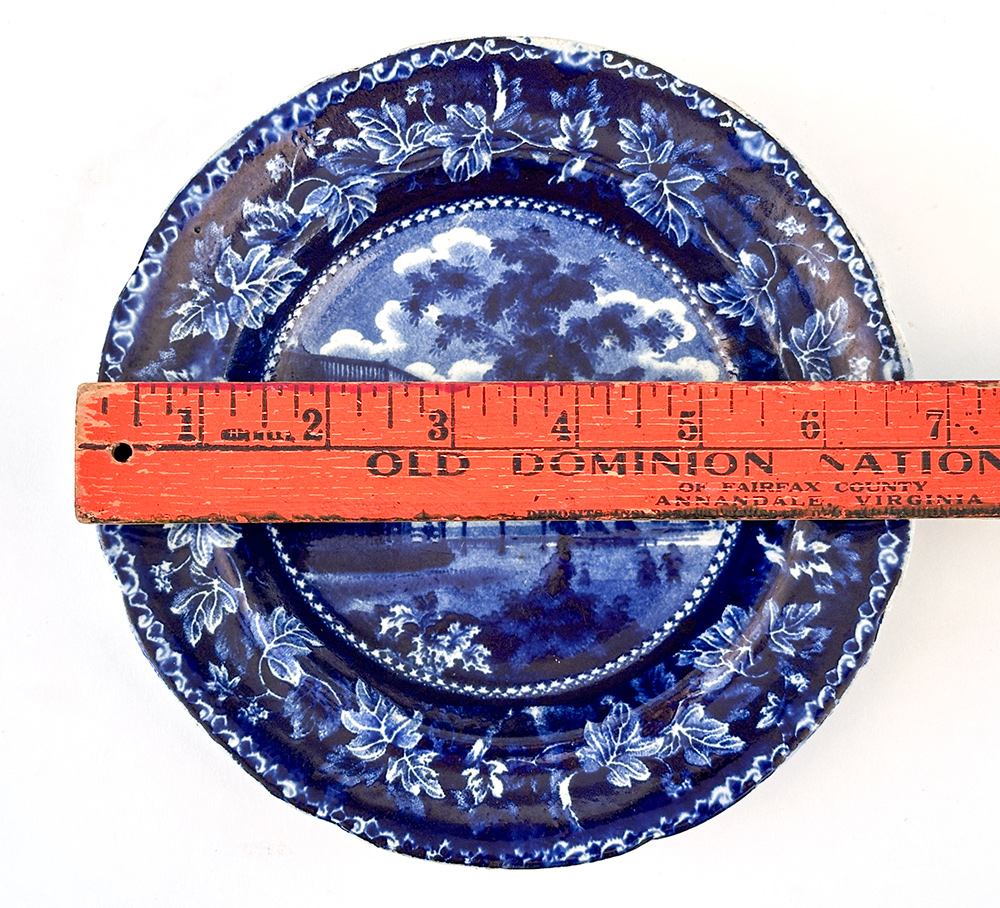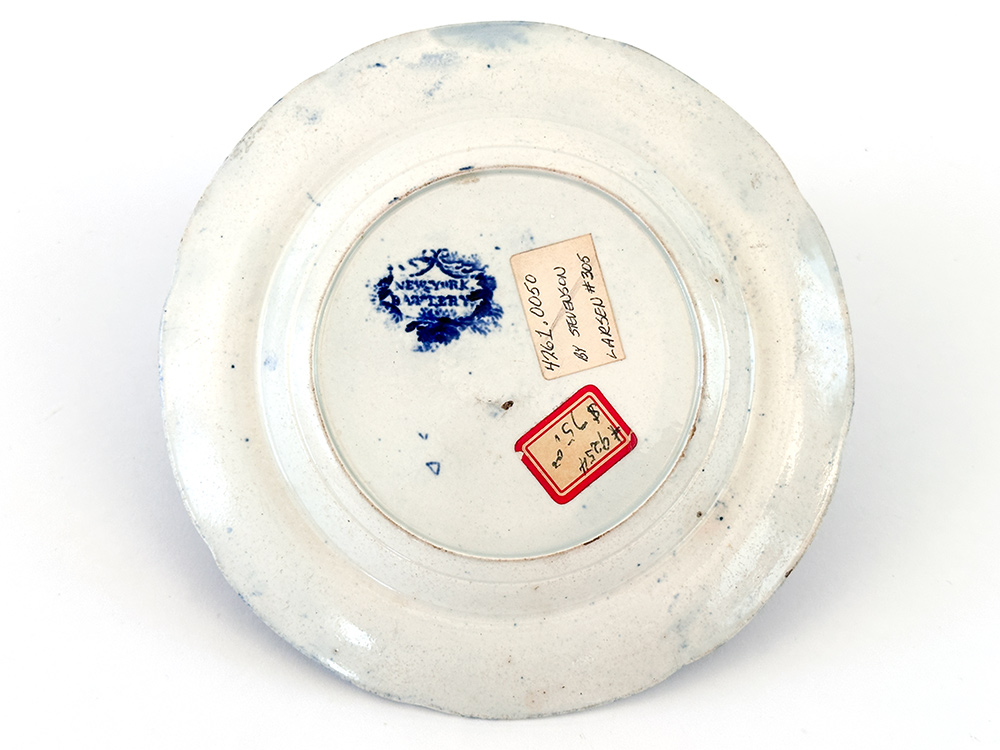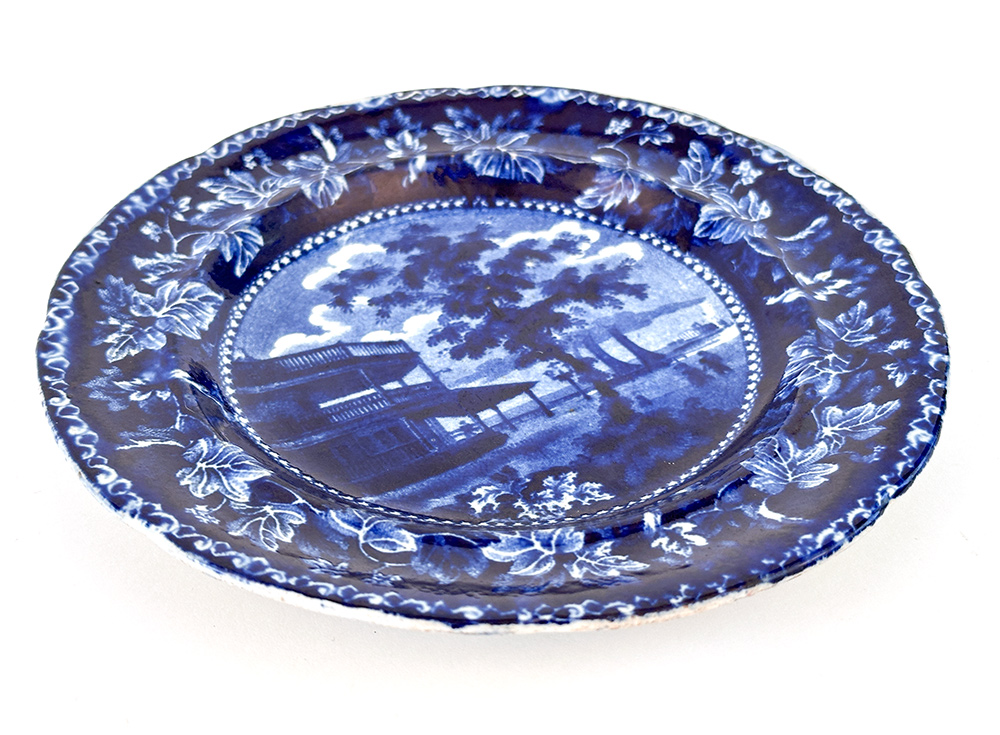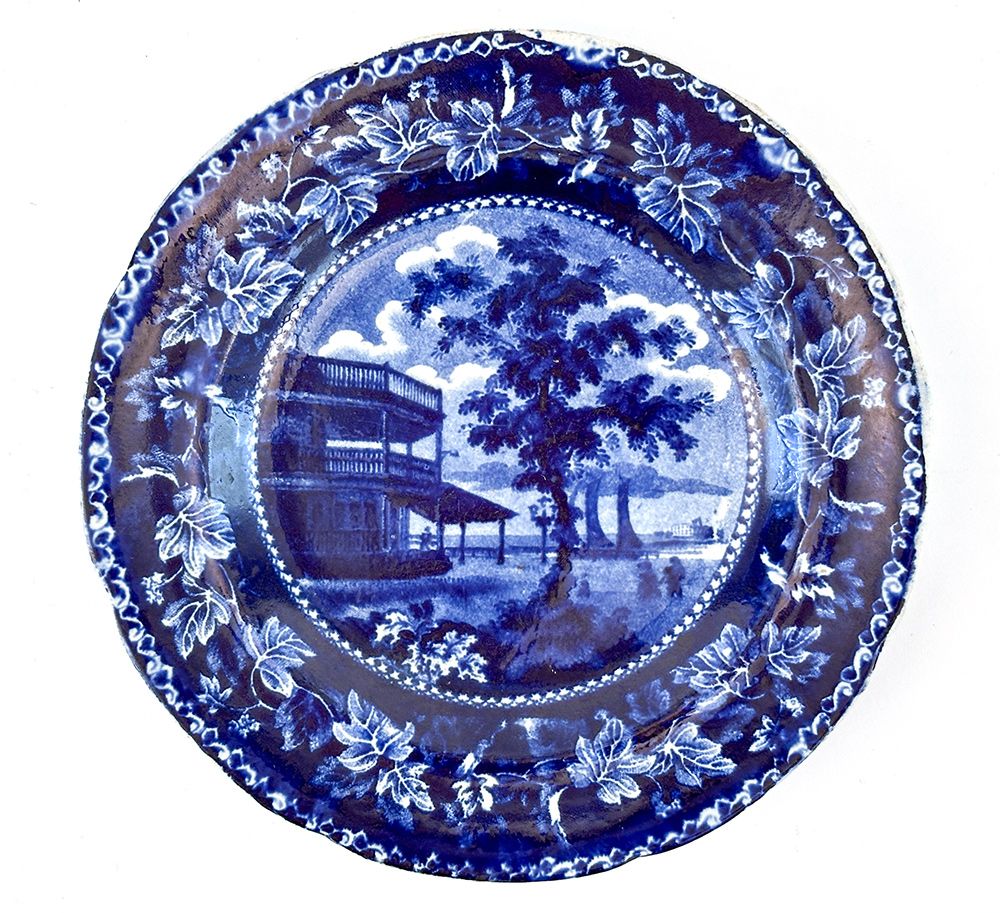
Circa 1820: This hard to find 6 7/8" dark blue transferware bread plate from English potter Ralph Stevenson's attractive Vine Border series that features nearly twenty American views is marked "New York Battery" on the reverse and is also known as "Battery, New York, Flagstaff Pavillion," "The Battery Flagstaff," and "Battery, New York (Flagstaff Pavillion)" in various texts on historical Staffordshire. For some interesting historical information the Flagstaff Pavillion, we must turn to R.T. Haines Halsey's Pictures of Early New York on Dark Blue Staffordshire Pottery, which was first published in 1899 and then reissued in 1974 by Dover Publications. On page 105, Halsey explains that "in 1809 Joseph McLaughton erected an octagonal two-story wooden building around the...flagstaff at the southeastern extremity of the Battery." He goes on to note that the building "was rented to the builder, who was given at the same time the monopoly of the sale of refreshments of various kinds on the public grounds in this vicinity." After the War of 1812, as Halsey asserts on pages 105 and 106, the "building came into the control of of Messrs. Hathaway and Marsh, and what was popularly known as the 'Flagstaff' was the scene of many a merry-making. The alluring advertisements in the daily papers invited the reader to many a concert given by the various regimental bands. The tickets admitting to the gallery were twenty-five cents, and were sold at the bar, which occupied the lower story." This wonderful and scarce New York City view of an early 19th century party palace is in excellent condition with no chips, cracks, or repairs with typical minor utensil marks on the front and expected shelf wear on the reverse.
